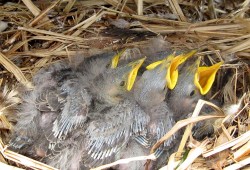I know this isn’t current, but it is so interesting!
Alumnae Sisters Created the Mount Holyoke Seminary in Turkey
Just seven years after graduating from Mount Holyoke, Mary Ann (known also as Mary and Annie) and Charlotte Ely, both class of 1861, established their own version of the Mount Holyoke Seminary in Bitlis, Turkey. A handwritten “autobiographical sketch” found in Archives and Special Collections, presumed to have been written by Mary, reveals the school’s origins. In 1866, after having spent several months touring Europe, including a visit to the Kurdistan region (which she spelled Koordistan), the sisters encountered missionary families who were eager to recruit teachers to educate Armenian women in Bitlis.
The sisters “finally offered to go ourselves,” wrote Mary, after “failing to get a response to our numerous appeals and letters, and unable to stifle the sound of that Macedonian cry.”
The city of Bitlis is situated more than 5,000 feet above sea level in the steep-sided valley of the Bitlis River, a tributary of the Tigris. A sepia-toned photograph of the exterior of the school reveals the original four-room, two-story building nestled beneath low mountains with few trees.
The walls were constructed of large rectangular stone blocks, extras of which were piled on the ground outside—records indicate they were used to build at least three other facilities on the missionary compound. Small square windows appear on the first floor, and windows twice as tall open out from the second floor. The flat-topped roof is framed by decorative pointed cupolas. A low wall, made of the same rectangular bricks, encloses the grounds.
Mary wrote of the place: “In the spring of 1870 the corner stone of a small but substantial building was laid, and in less than a year afterward eight pupils were happily domiciled in the Mt. Holyoke School of Koordistan.”
Another photo provides a view into a classroom. The ceiling is supported by many close-set, rough-hewn rounded beams, and another beam stands in the center of the room like a column. An oil lamp hangs from the ceiling, and abundant natural light streams through windows on two sides. The ledges of the windows house dozens of leafy potted plants, a few of which have vines so long that they are growing up onto the walls where framed artwork is hung up high.
A multitude of patterned rugs covers the floors. A globe is set on a table in the back; a small piano—noted to have been played by Mary—against one wall. A dozen or more desks made of wood and iron are set up in neat rows facing the front of the room.
In these classrooms, the sisters taught courses in physiology, physical geography, grammar, algebra, natural and moral philosophy, zoology, astronomy, botany, and “much study in the Bible,” according to a letter from Mary housed in the College’s Archives and Special Collections. “In making out rules and routine for the new school enterprise our aim has ever been to follow as nearly as might be those with which we were familiar at our beloved school home—the grand New England mother of this far away Mt. Holyoke of Koordistan,” she wrote.
Though the school had as many as two hundred boarding pupils in attendance at one point, due to the early marriages of many students, a devastating earthquake in 1907, and lack of tuition dollars, only about fifty students received diplomas after forty-seven years, “but many others have secured a pretty good education within these walls and gone forth to lives of earnest Christian usefulness,” Mary wrote. Many graduates later taught at the school, which grew through the years to include primary, intermediate, and high school levels for boys and girls, including orphans of the region.
Mary died in 1913. With Charlotte’s death just two years later, and the Armenian Genocide an imminent threat to citizens of Turkey, the school closed its doors.
—By Anne Pinkerton
—Photos courtesy of Archives and Special Collections








You must be logged in to post a comment.